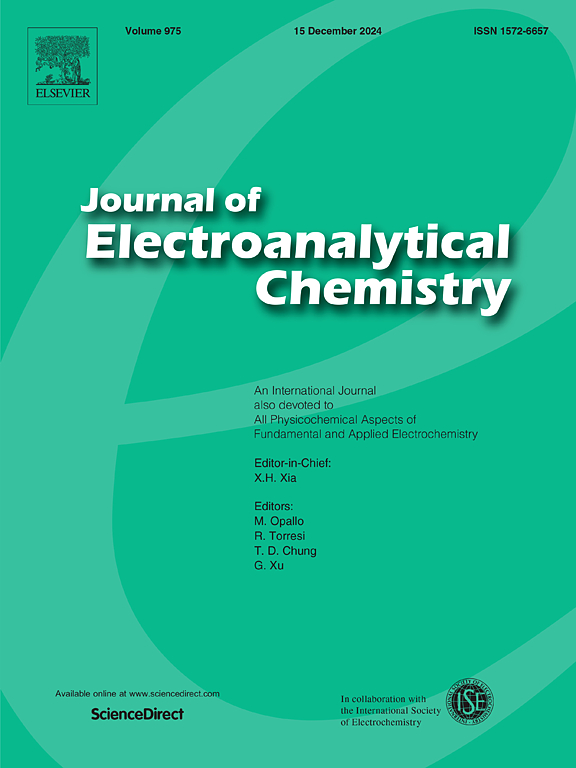Electrochemical behavior of Zn(II) and codeposition of ZnPr alloy from LiF-BeF2-ZnF2-PrF3 molten salt
IF 4.1
3区 化学
Q1 CHEMISTRY, ANALYTICAL
引用次数: 0
Abstract
As a typical lanthanide fission product with a high thermal neutron absorption cross-section in molten salt reactors (MSRs), it is crucial to remove praseodymium (Pr) from the 2LiF-BeF2 (FLiBe) molten salt system. This study evaluates the effectiveness of the electrochemical reduction and separation of Pr in the FLiBe-ZnF2 (1.0 wt%)-PrF3 (2.0 wt%) molten salt system. The electrochemical behavior of Zn(II) and Pr(III) is systematically examined using various electrochemical methods and micro surface analyses such as SEM-EDS, XPS, and XRD. Reversible reductions of Zn and Zn11Pr are confirmed at potentials of 1.25 and 0.22 V vs Eeq,Be(II)/Be at 873 K, respectively. The standard Gibbs free energy of formation of Zn11Pr and the activity coefficient of Zn(II) are evaluated thermodynamically based on experimental data. Consequently, the successful reduction and extraction of Pr from the FLiBe-PrF3-ZnF2 molten salt are achieved through co-deposition in the form of Zn11Pr on molybdenum material.

LiF-BeF2-ZnF2-PrF3熔盐中Zn(II)的电化学行为及共沉积ZnPr合金
镨是熔盐堆中高热中子吸收截面的典型镧系裂变产物,从2LiF-BeF2 (FLiBe)熔盐体系中去除镨至关重要。本研究评估了在FLiBe-ZnF2 (1.0 wt%)-PrF3 (2.0 wt%)熔盐体系中电化学还原和分离Pr的有效性。采用SEM-EDS、XPS和XRD等多种电化学方法和微表面分析方法,系统地研究了Zn(II)和Pr(III)的电化学行为。Zn和Zn11Pr分别在1.25和0.22 V / Eeq电位下可逆还原,Be(II)/Be在873 K下可逆还原。根据实验数据计算了Zn11Pr的标准吉布斯生成自由能和Zn(II)的活度系数。因此,通过在钼材料上以Zn11Pr的形式共沉积,实现了FLiBe-PrF3-ZnF2熔盐中Pr的成功还原和萃取。
本文章由计算机程序翻译,如有差异,请以英文原文为准。
求助全文
约1分钟内获得全文
求助全文
来源期刊
CiteScore
7.80
自引率
6.70%
发文量
912
审稿时长
2.4 months
期刊介绍:
The Journal of Electroanalytical Chemistry is the foremost international journal devoted to the interdisciplinary subject of electrochemistry in all its aspects, theoretical as well as applied.
Electrochemistry is a wide ranging area that is in a state of continuous evolution. Rather than compiling a long list of topics covered by the Journal, the editors would like to draw particular attention to the key issues of novelty, topicality and quality. Papers should present new and interesting electrochemical science in a way that is accessible to the reader. The presentation and discussion should be at a level that is consistent with the international status of the Journal. Reports describing the application of well-established techniques to problems that are essentially technical will not be accepted. Similarly, papers that report observations but fail to provide adequate interpretation will be rejected by the Editors. Papers dealing with technical electrochemistry should be submitted to other specialist journals unless the authors can show that their work provides substantially new insights into electrochemical processes.

 求助内容:
求助内容: 应助结果提醒方式:
应助结果提醒方式:


